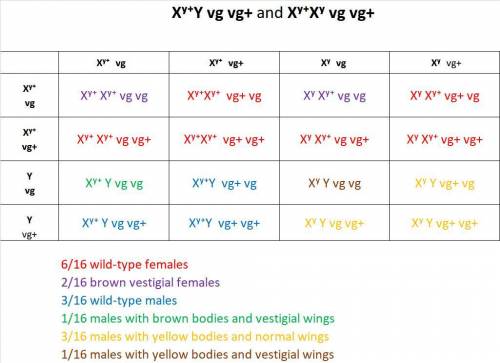
Biology, 02.10.2019 18:20 kharmaculpepper
In drosophila, a cross was made between a yellow- bodied male with vestigial (not fully developed) wings and a wild-type female (brown body). the f1 generation consisted of wild-type males and wild-type females. f1 males and females were crossed, and the f2 progeny consisted of 16 yellow-bodied males with vestigial wings, 48 yellow-bodied males with normal wings, 15 males with brown bodies and vestigial wings, 49 wild-type males, 31 brown-bodied females with vestigial wings, and 97 wild-type females. explain the inheritance of the two genes in question based on these results.

Answers: 2
Another question on Biology

Biology, 22.06.2019 01:30
15 ! come and answer! a(n) disease is caused by a pathogen and can spread among organisms. a infectious b noninfectious c toxic d contaminated
Answers: 1

Biology, 22.06.2019 17:00
Which of the following is a feature of all cells? o a. all cells have a nucleus. o b. all cells have dna for at least part of their life cycle. het . o c. all cells are spheres. o d. all cells have a rigid cell wall.
Answers: 1

Biology, 22.06.2019 18:20
Astudent measured the amount of carbon dioxide (co2) produced by yeast during an experiment. use the data in the table at the right to answer the questions below. which variable is the dependent variable?
Answers: 3

Biology, 22.06.2019 19:30
You are studying a protein that you call protein x. there is an aspartic acid at a key position in protein x which is important in the folding and stabilization of that protein. if this aspartic acid is changed to a different amino acid, which type of amino acid substitutions is most likely to allow the protein to fold normally?
Answers: 2
You know the right answer?
In drosophila, a cross was made between a yellow- bodied male with vestigial (not fully developed) w...
Questions

Chemistry, 25.07.2019 23:30


Biology, 25.07.2019 23:30

English, 25.07.2019 23:30








Chemistry, 25.07.2019 23:30











